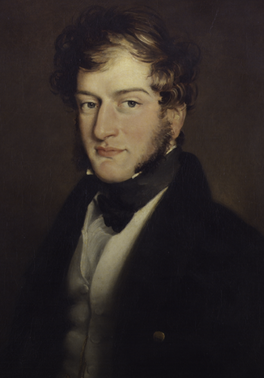
John Nash was one of the foremost British architects of the Georgian and Regency eras, during which he was responsible for the design, in the neoclassical and picturesque styles, of many important areas of London. His designs were financed by the Prince Regent and by the era's most successful property developer, James Burton. Nash also collaborated extensively with Burton's son, Decimus Burton.
The year 1897 in architecture involved some significant events.
The year 1932 in architecture involved some significant events.
The year 1859 in architecture involved some significant architectural events and new buildings.
The year 1806 in architecture involved some significant events.
The year 1792 in architecture involved some significant events.
The year 1858 in architecture involved some significant events.
The year 1809 in architecture involved some significant architectural events and new buildings.
The year 1857 in architecture involved some significant events.
The year 1805 in architecture involved some significant events.
The year 1827 in architecture involved some significant architectural events and new buildings.
The year 1821 in architecture involved some significant events.
The year 1824 in architecture involved some significant events.
The year 1766 in architecture involved some significant events.

The Sorrel–Weed House, or the Francis Sorrel House, is a historic landmark and Savannah Museum located at 6 West Harris Street in Savannah, Georgia. It represents one of the finest examples of Greek Revival and Regency architecture in Savannah and was one of the first two homes in the State of Georgia to be made a State Landmark in 1954. At 16,000 square feet, it is also one of the largest houses in the city. The Sorrel–Weed House was first opened to the public in January 1940 by the Society for the Preservation of Savannah Landmarks. It was the society's first exhibit and was called "The Society for the Preservation of Savannah Landmarks Presents a loan Exhibit of Furniture and Fine Arts 18th and 19th Centuries at the Sorrel-Weed House on Madison Square: Jan-April 1940." This society later became the Historic Savannah Foundation. The Sorrel–Weed House was opened again to the public in 2005 and conducts Historic Savannah Tours during the day and Savannah Ghost Tours inside the house every evening. These tours are conducted by the Sorrel-Weed House Museum. It is located at the corner of Bull Street and Harris Street.
The year 1829 in architecture involved some significant events.
The year 1836 in architecture involved some significant events.
The year 1767 in architecture involved some significant events.
The following is a timeline of the history of Savannah, Georgia, United States.

William Jay was an architect. He designed several notable buildings, firstly in London, then in Savannah, Georgia, United States.



